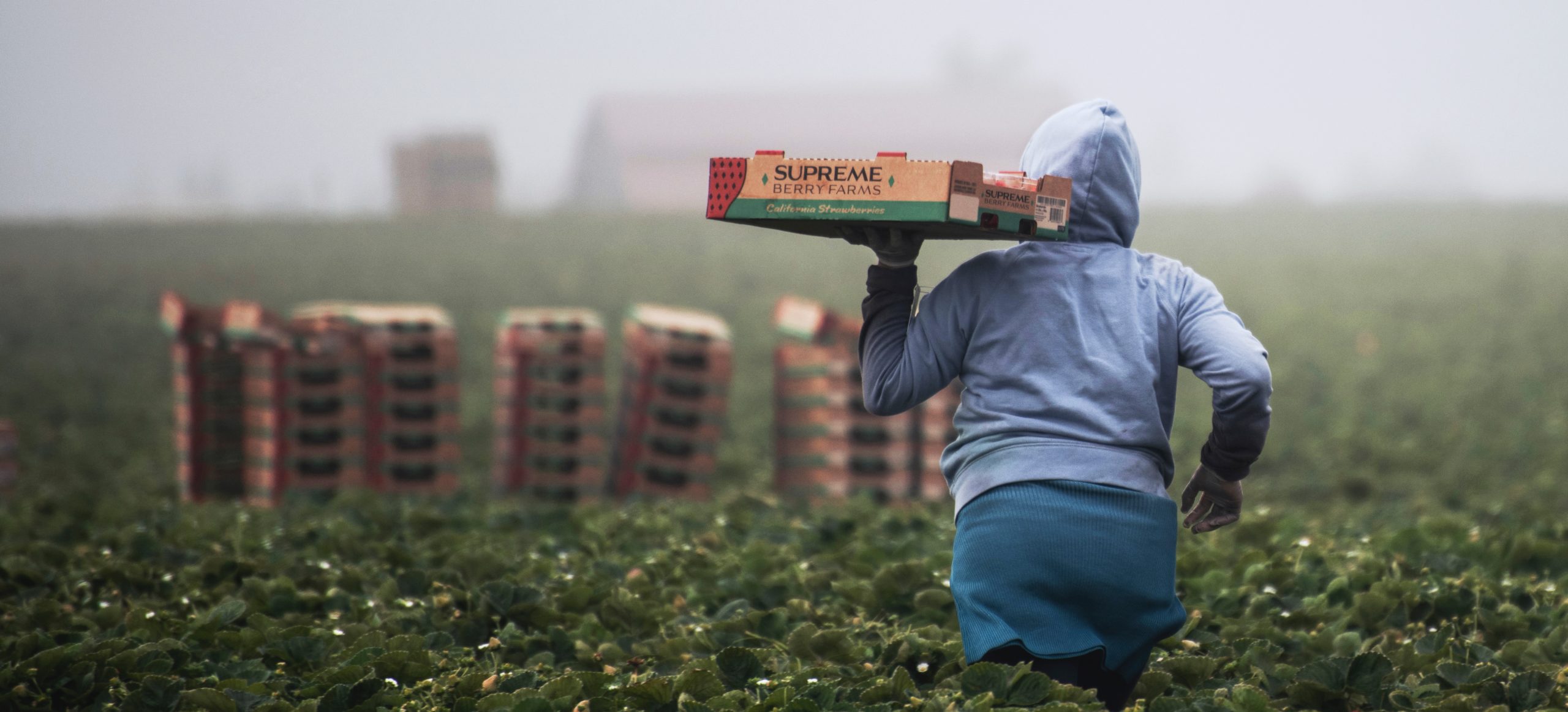When you think of the farm workers movement, two leaders probably come to mind: Cesar Chavez and Dolores Huerta. Through their organizing, we were shown that dedication and passion are driving forces to get folks to join a movement and to persuade elected officials to act. On Cesar Chavez Day, we recognize the sacrifices farm workers made to address injustices while recommitting to our effort to improve working conditions for all workers.
The roots of the farm worker’s movement dates back to the 1960s in California’s Central Valley. At the time, landowners and agriculture companies grew extremely wealthy at the expense of the people who worked the farms for them. Many of them Mexican-Americans who couldn’t read or write, had a life expectancy of 49-years-old, and were virtually invisible to the rest of the state and country.
Cesar Chavez had been one of those farm workers. At the age of 14, he dropped out of school to work in the fields to help support his family. After working in the fields, Cesar joined the Navy and following his service began working with the Community Service Organization (CSO), a group dedicated to improving the lives of Mexican-Americans. While at the CSO, Cesar met Dolores, a former teacher from Stockton who joined CSO after witnessing the malnutrition of her students and being falsely told by administrators that it was the fault of parents’ alcoholism for the hungry children.
Cesar and Dolores’ effort to organize and unionize farm workers can be traced back to San Francisco in 1962 where Cesar approached Dolores with a plan to create a national union for farm workers to address injustices in the fields. Cesar was not naive when he approached Dolores with the idea – he told Dolores that “we would not see a national union in our lifetime because the “growers were too rich, too powerful, and too racist” to let it happen. This did not deter their leadership but rather informed their path forward.
The Bracero Program was the first barrier that stood in the way of organizing a union. The program started in 1942 as a way to replace workers in the United States who were off fighting in World War 2. It continued into the sixties and was used as a tactic for landowners to end labor organizing. Whenever there were rumors of workers organizing for better working conditions, agriculture companies would deport their current workforce and recruit new workers from Mexico to fill their spot. Cesar and Dolores knew that this needed to end for workers to organize and use their collective power to improve working conditions; so they traveled to Washington, D.C. to successfully lobby the Department of Labor to end the Bracero Program.
Even though Cesar had dropped out of middle school, he was an incredibly smart organizer and inspiring speaker. He understood that he didn’t need to recreate organizing but rather borrow from the non-violent successes of leaders such as Gandhi and Martin Luther King, Jr. Learning from other leaders, Cesar understood that the fight for farm worker justice had to expand beyond the fields; this fight had to be brought into the public eye.
Similar to the March on Washington that happened just years before, Cesar, Dolores, and their comrades organized a 250 mile march from Delano, California to Sacramento. The march started with a few dozen people, but as they trekked from city-to-city through the San Joaquin Valley the march was joined by thousands of supporters. By Easter Day 1966, the marchers arrived in Sacramento. Through this action, the farm workers won over the support of leaders such as Robert Keddendy who called out local sheriffs and the district attorneys for harassing the marchers and subjecting them to unconstitutional arrests.
The demonstration of democracy from Delano to Sacramento opened the door for negotiations for better working conditions.
The farm worker movement’s legacy extends beyond the wins that were earned through the collected struggle of the sixties. The legacy of Cesar Chavez and the work that Dolores Huerta continues to this day at 92-years-old, shows us that to be an effective leader you do not need to come from money or have had access to higher-education but that good leadership comes from people who meet folks where they’re at, listens and brings attention to the common struggle, has a plan of action, and focused goals.
We celebrate Cesar Chavez Day to recognize the leadership that began the effort to improve farm workers’ working conditions here in California, which continues to this day. As Cesar, Dolores, and the rest of the farm worker movement would say: “Si Se Puede!”
References:
(1) https://guides.loc.gov/latinx-civil-rights/united-farm-workers-union
(2) https://www.womenshistory.org/education-resources/biographies/dolores-huerta
(3) https://ca.pbslearningmedia.org/resource/df492426-ffec-4eef-bed1-caca19c08b41/the-farm-worker-movement/


